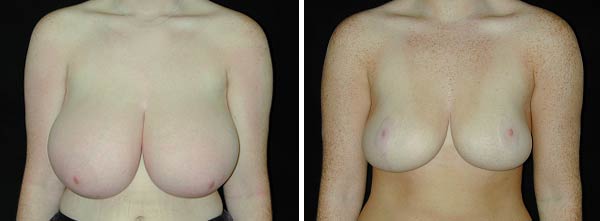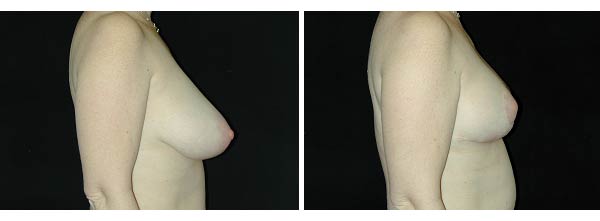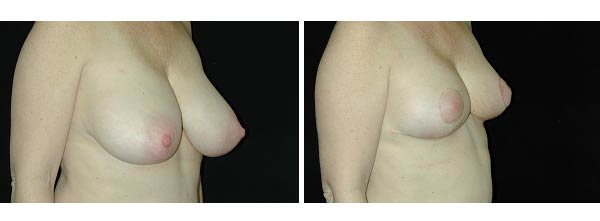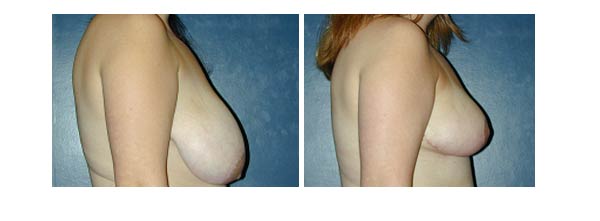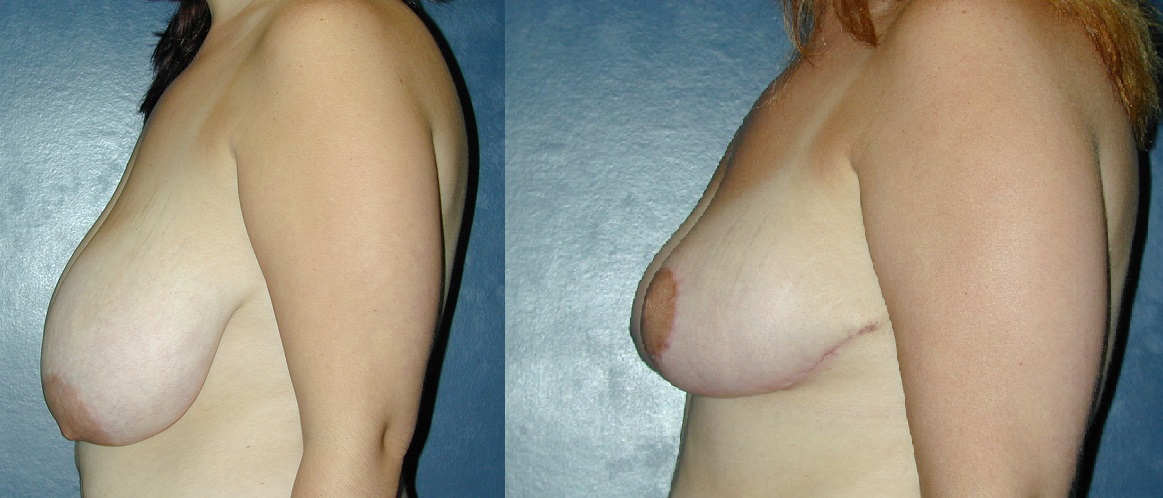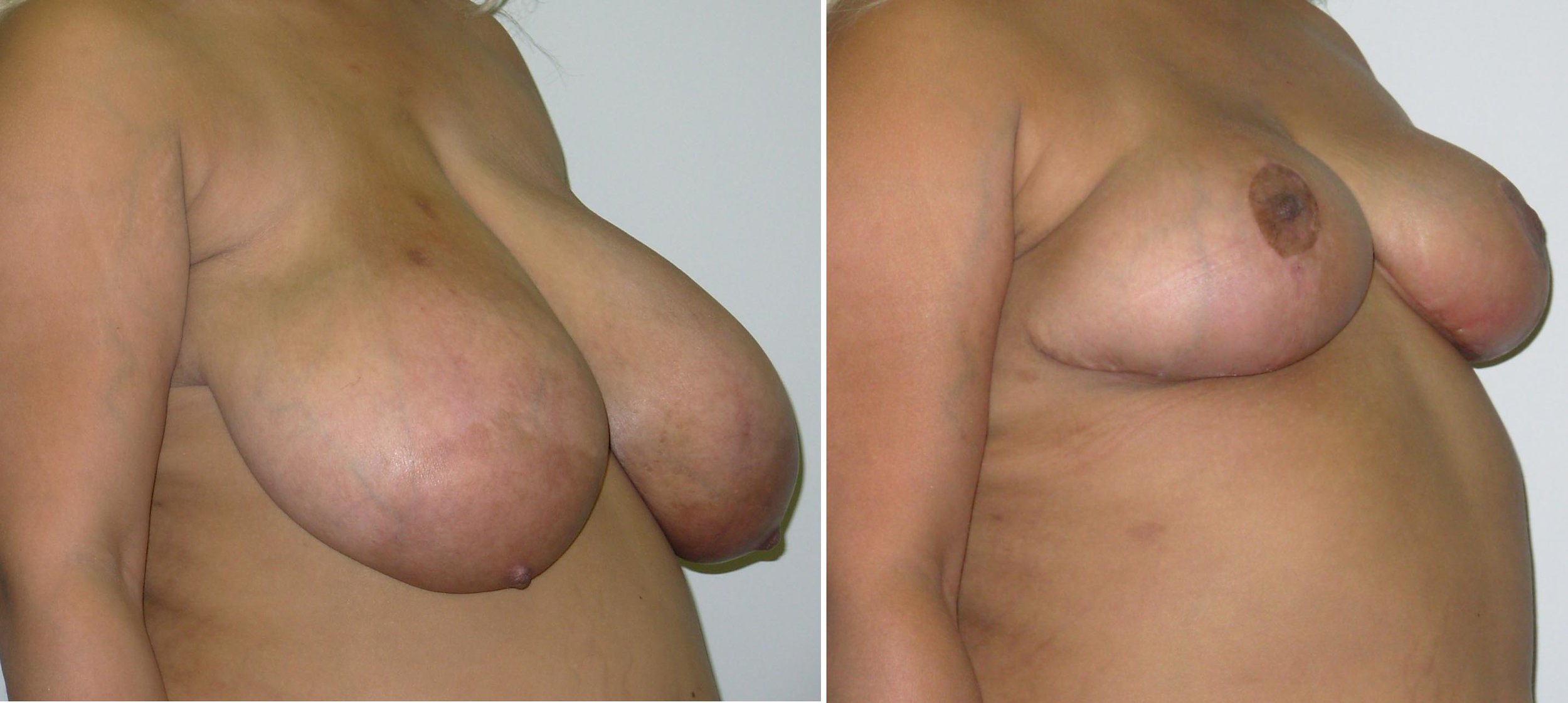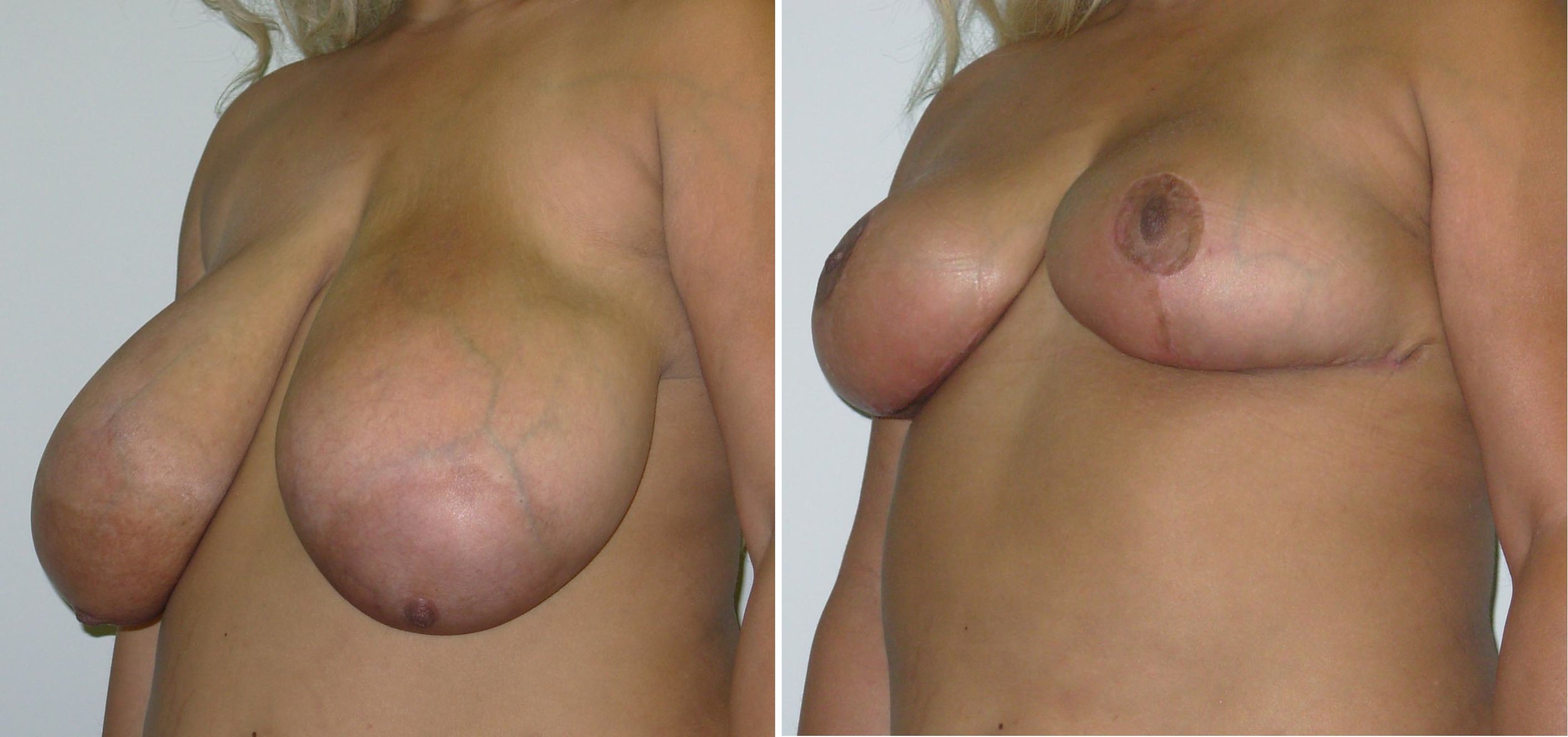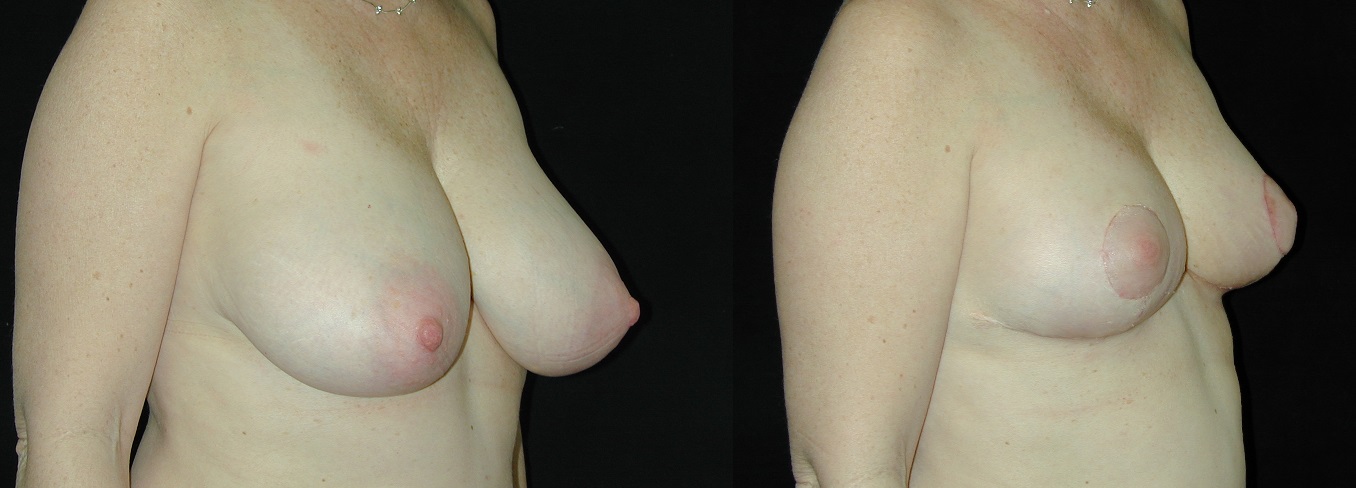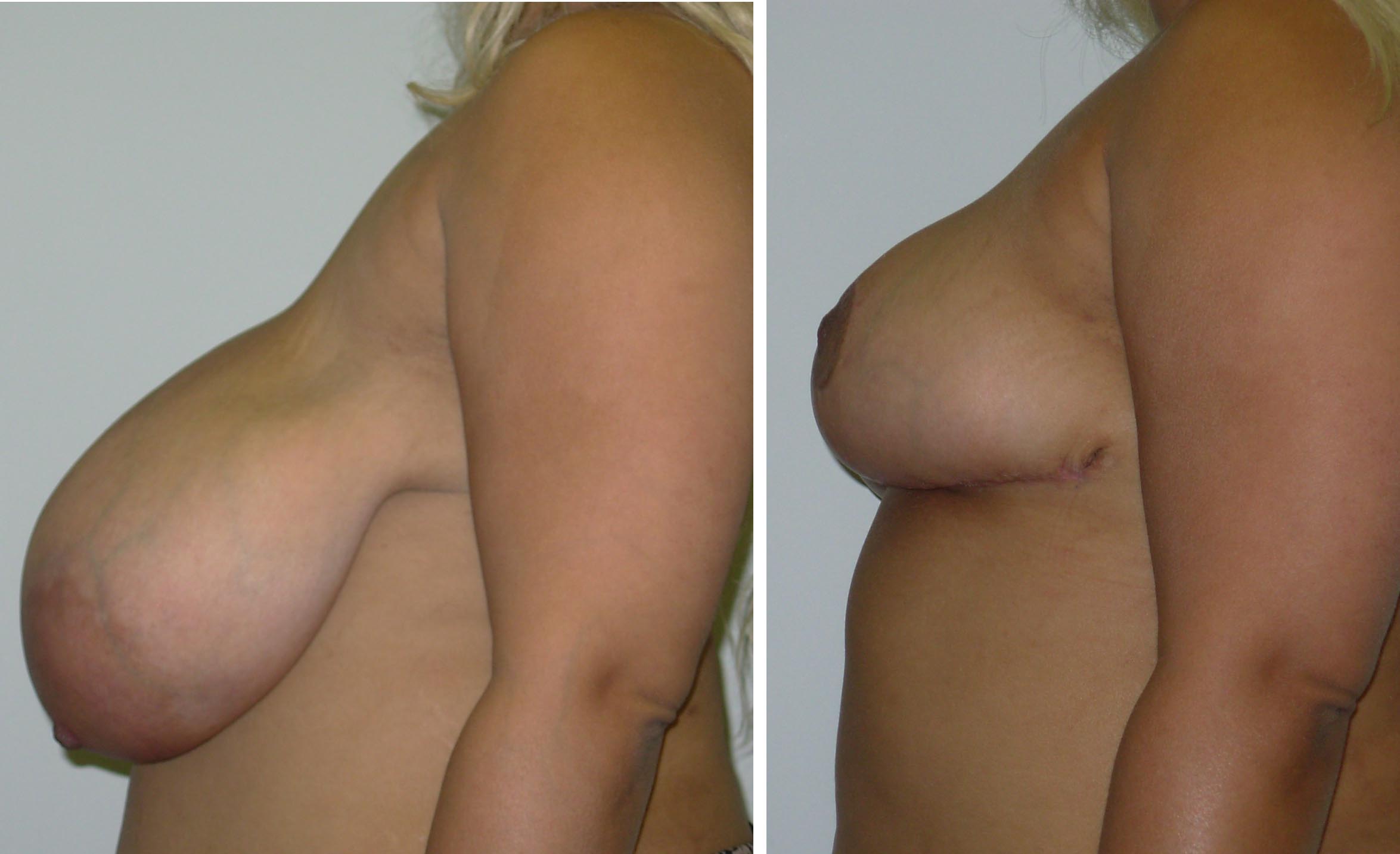What is breast reduction?
Breast reduction surgery is also referred to reduction mammaplasty. This procedure reduces the size of your breasts, improves asymmetries and shape of the breasts as well as lifts droopy, pendulous breasts. It is typically performed for women who have inherited out of proportion very large breasts, large heavy pendulous -hanging breasts. The patients may have back, neck and or shoulder pain, as well as grooving of the shoulders and or skin irritation in the creases of the breasts. In addition, very large breasts may limit ones physical activity and cause difficulty fitting into various clothing. Patients are often very self-conscious about the size of their breasts.
How is the procedure done/Where will I have scars?
There are different incision options depending on the size of the breast reduction. The incisions classically are described as an anchor design (around the areola extending vertically from the bottom of the areola to the breast fold then horizontally along the curve of the breast fold. Other options may include the previously described incisions with no scar or limited scar along the breast fold. The method you choose will depend on the size of the breast reduction. Dr. Mezrow will discuss which technique you are a candidate for. After making the incisions, the excess skin and breast tissue are removed and the nipple–areola are raised to a higher position. Typically, the areola that are enlarged are reduced in size. Liposuction may also be used to further shape the outer quadrants of the breast and reduce axillary fullness.
Usually, the nipple and areola remain attached to underlying tissue thereby preserving sensation and the possibility to breast-feed. Rarely, if your breasts are extremely large and pendulous, the nipples and areolas may need to be completely detached before they are raised to a higher level (free nipple graft). In such a case, you will loose sensation and the possibility of breast-feeding.
The procedure is performed as an outpatient. The procedure typically takes approximately 2-3 hours to perform depending on the size of the reduction. Most patients recover within 1 to 2 hours after surgery and are discharged home. It is important to arrange for someone to drive you home after surgery and to stay with you for at least the next day or two.
Check out Before and After photos of our clients
Consulting with Dr. Mezrow
During the consultation, Dr. Mezrow will ask you about your particular concerns regarding your breasts and desired breast size. This will help determine your expectations and determine whether they can be realistically achieved.
After obtaining a comprehensive medical and surgical history, Dr. Mezrow will examine your breasts and chest wall and shoulders. The breast volume, asymmetries, breast skin tone, presence of masses, nipple position and sensation will be assessed. Dr. Mezrow will also take measurements that will guide him in surgical planning.


